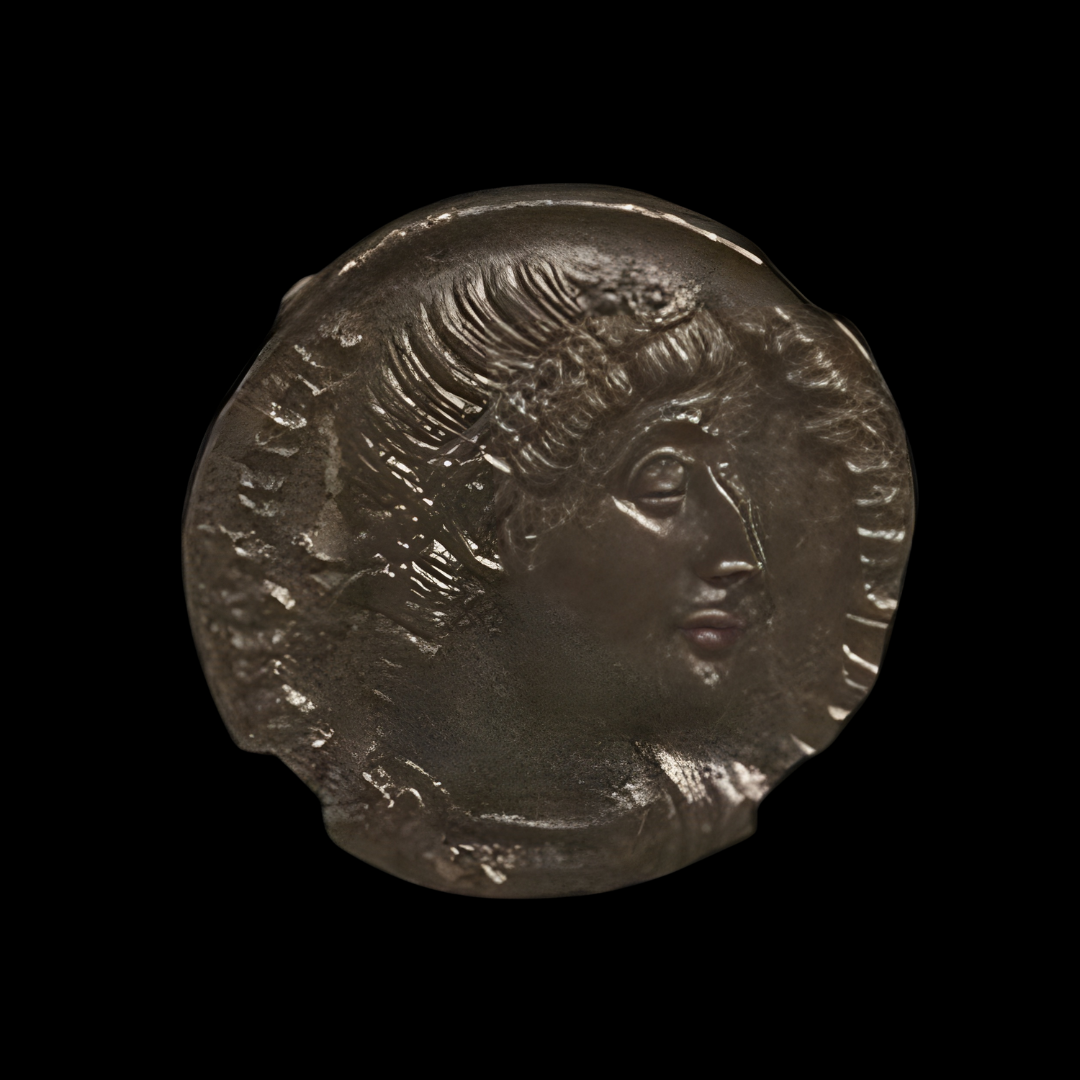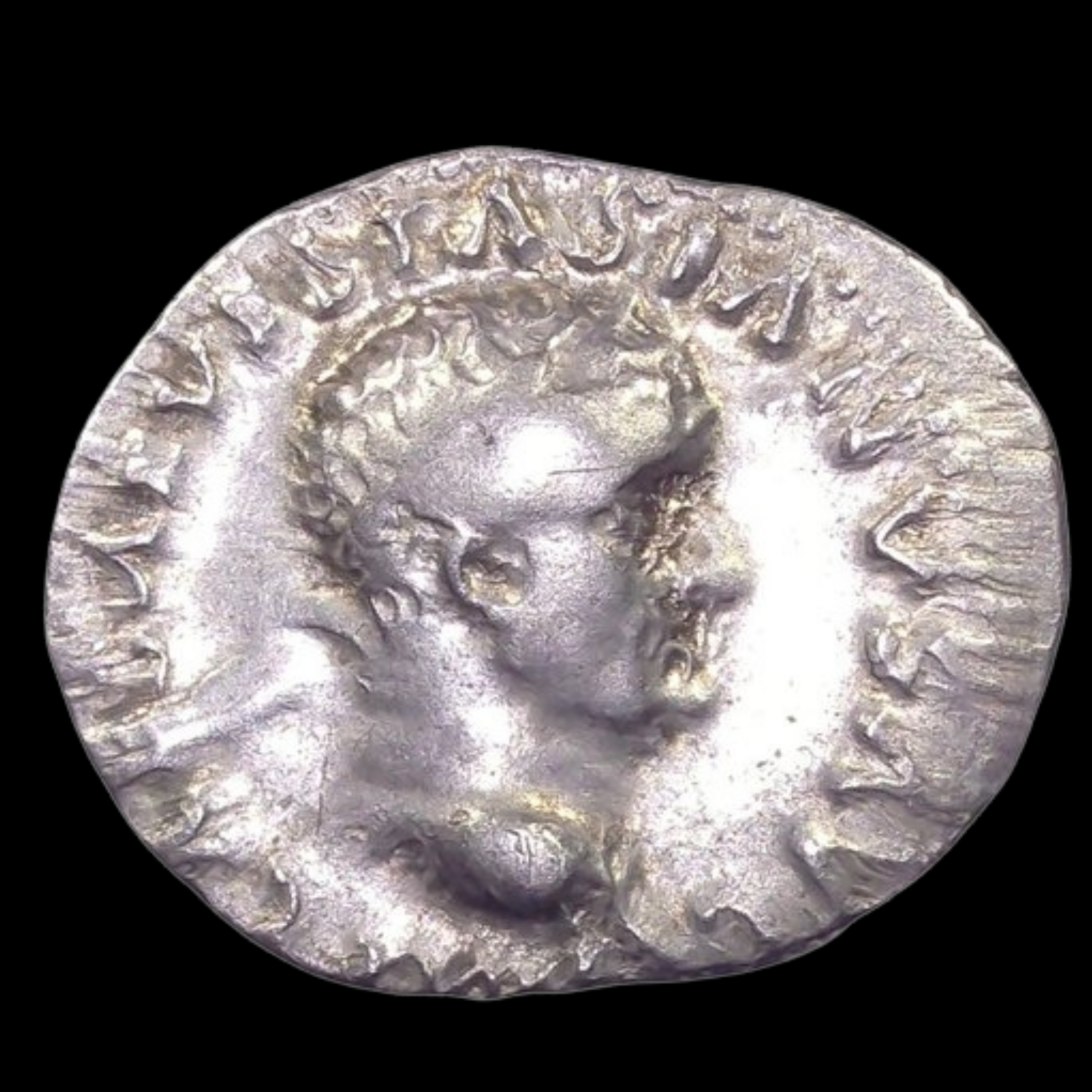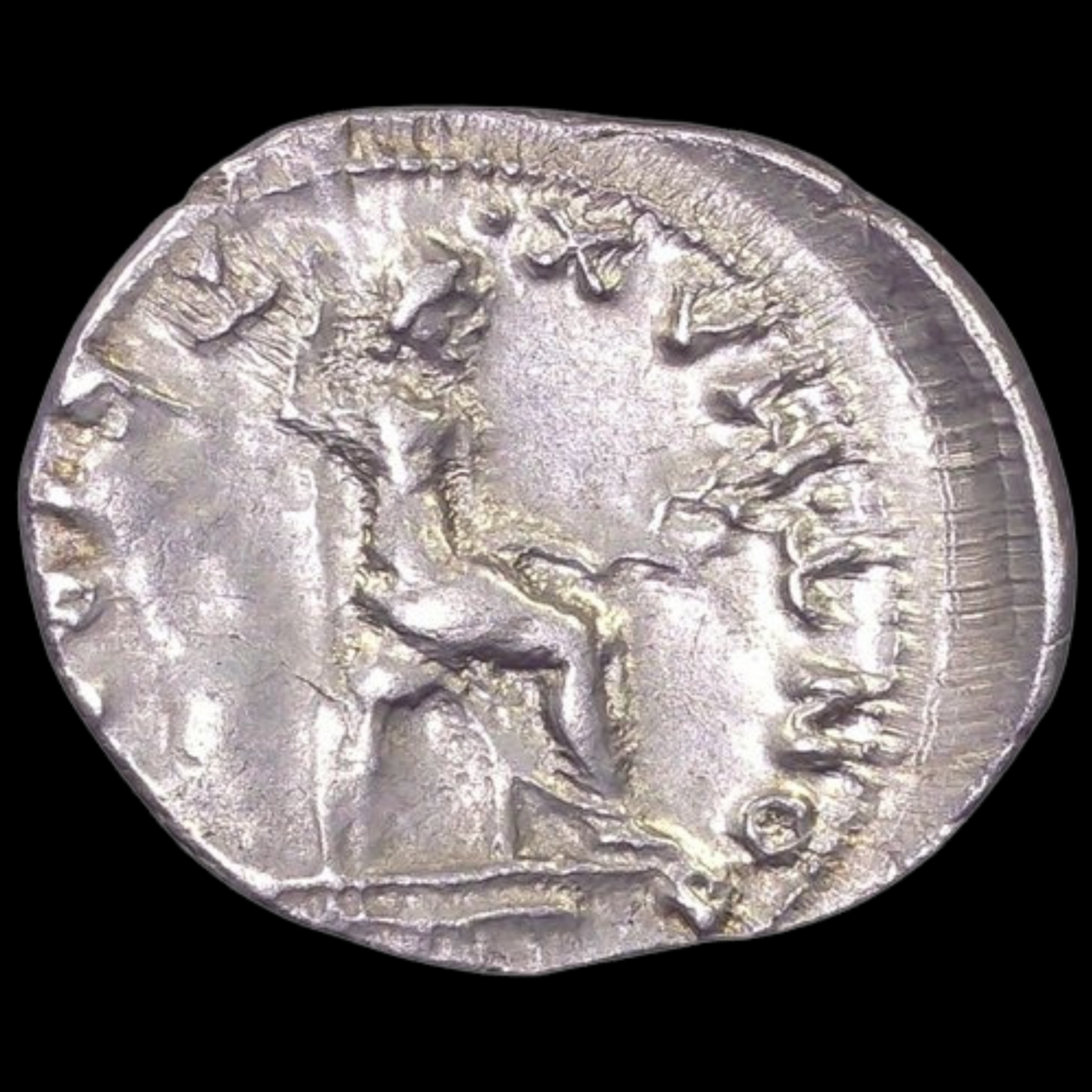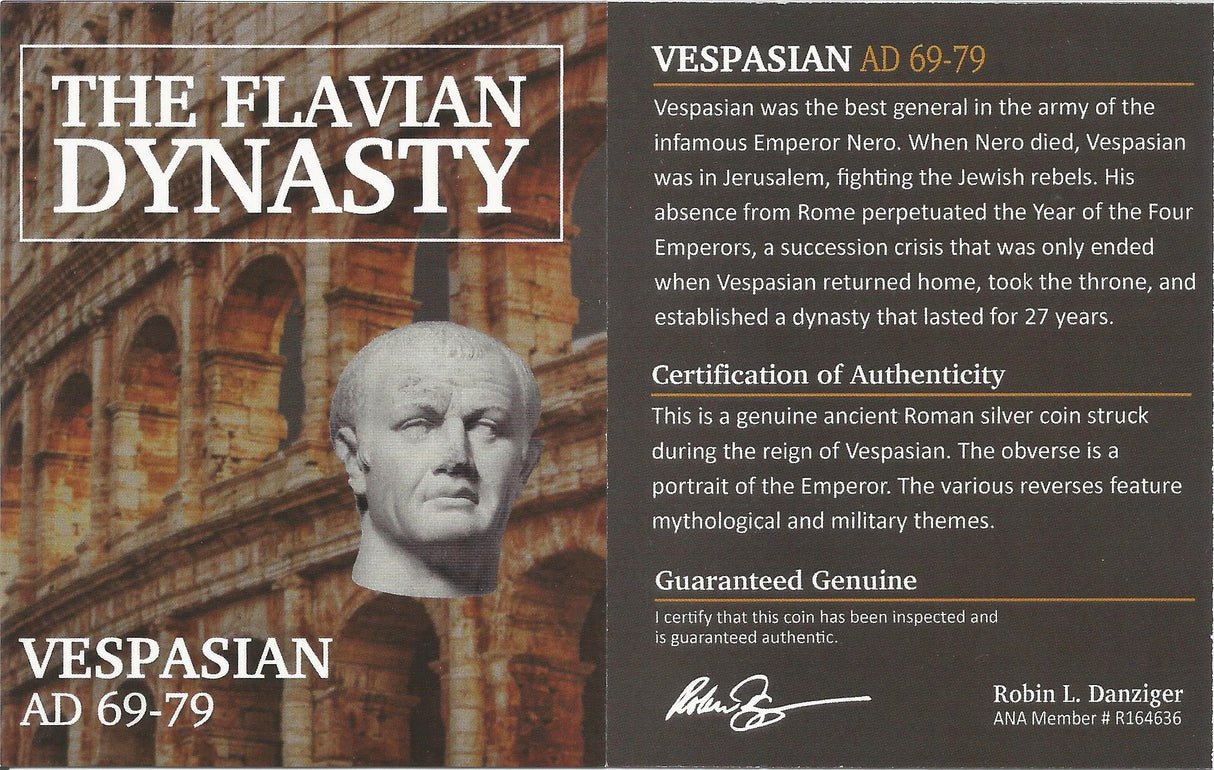 Image 1 of 3
Image 1 of 3

 Image 2 of 3
Image 2 of 3

 Image 3 of 3
Image 3 of 3




Roman Bronze Coin of Procopius (about 1,660 years ago)
The coins shown are representative examples of the grade and type, but not the actual specimens for sale. For details on NGC’s grading standards and definitions, please refer to our NGC Grading page.
This bronze coin was issued by Procopius, a Roman military commander who briefly claimed the imperial throne as a usurper against Emperor Valens in the eastern portions of the Roman Empire. Minted during his short-lived revolt that lasted less than a year (365-366 CE), this coin represents a rare glimpse into the political instability of the late Roman period.
Coin Description:
Front side: Portrait of Procopius facing right, likely depicted with a pearl diadem and imperial robes, with his name and imperial titles in Latin around the edge.
Back side: Probably features standard late Roman imperial imagery such as a soldier holding standards, Victory figure, or perhaps the emperor standing with captives.
Technical Details:
Bronze alloy composition
Denomination: Likely an AE3 or small bronze denomination
Weight: Approximately 2-3 grams
Diameter: Approximately 18-20 mm
NGC Certified for authentication and preservation
Minted between 365-366 CE
Condition as specified by NGC certification
Historical Significance: Procopius claimed to be a relative of Emperor Julian (the Apostate) and leveraged this connection to gain support when he proclaimed himself emperor in Constantinople (modern Istanbul, Turkey) while Emperor Valens was away. This coin represents a brief eight-month period of civil war in the Eastern Roman Empire that ended with Procopius's defeat and execution. As a usurper who failed to establish legitimate rule, his coinage is relatively rare, making this an important historical artifact from a tumultuous period when imperial authority was frequently challenged. After his defeat, Procopius likely suffered damnatio memoriae (condemnation of memory), with attempts made to erase his legacy from official records.
The coins shown are representative examples of the grade and type, but not the actual specimens for sale. For details on NGC’s grading standards and definitions, please refer to our NGC Grading page.
This bronze coin was issued by Procopius, a Roman military commander who briefly claimed the imperial throne as a usurper against Emperor Valens in the eastern portions of the Roman Empire. Minted during his short-lived revolt that lasted less than a year (365-366 CE), this coin represents a rare glimpse into the political instability of the late Roman period.
Coin Description:
Front side: Portrait of Procopius facing right, likely depicted with a pearl diadem and imperial robes, with his name and imperial titles in Latin around the edge.
Back side: Probably features standard late Roman imperial imagery such as a soldier holding standards, Victory figure, or perhaps the emperor standing with captives.
Technical Details:
Bronze alloy composition
Denomination: Likely an AE3 or small bronze denomination
Weight: Approximately 2-3 grams
Diameter: Approximately 18-20 mm
NGC Certified for authentication and preservation
Minted between 365-366 CE
Condition as specified by NGC certification
Historical Significance: Procopius claimed to be a relative of Emperor Julian (the Apostate) and leveraged this connection to gain support when he proclaimed himself emperor in Constantinople (modern Istanbul, Turkey) while Emperor Valens was away. This coin represents a brief eight-month period of civil war in the Eastern Roman Empire that ended with Procopius's defeat and execution. As a usurper who failed to establish legitimate rule, his coinage is relatively rare, making this an important historical artifact from a tumultuous period when imperial authority was frequently challenged. After his defeat, Procopius likely suffered damnatio memoriae (condemnation of memory), with attempts made to erase his legacy from official records.































